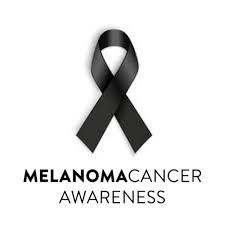By: Dordina Rouch, M.D.
After returning from a beach-based reunion of my college friends a few years ago, I was dutifully “liking” our pictures on Facebook when I noticed a big, dark ugly thing on my chest. Where did that come from? I made an appointment with my dermatologists and the biopsy confirmed melanoma. I knew that melanoma was the most serious type of skin cancer and was the fifth leading cancer in men and sixth in women. But how did this happen?
Sun exposure. Intense, intermittent sun exposure, especially early in life, puts a person at risk. Having five or more severe sunburns before adulthood makes a person twice as likely to develop melanoma.
Indoor tanning. A study found that women under 50 who had ever used a tanning bed were 2-6 times more likely to develop a melanoma.
Physical traits. Light skin, red or blond hair, blue or green eyes, a tendency to freckle and inability to tan are all associated with a higher risk for melanoma. People with a high number of moles (greater than 25) or a history of atypical/dysplastic moles are at risk.
Family history. History of other types of skin cancer. Basal cell and squamous cell cancer of the skin are associated with chronic sun exposure.
After the biopsy, I saw a surgeon who determined what kind of surgery was needed. The thickness (or depth in the skin) determines what kind of surgery is needed. Thinner melanomas require a smaller area of skin to be excised around the melanoma, whereas thicker ones require more skin to be taken at surgery. Similarly, the depth of the melanoma determines if lymph nodes close to the melanoma need to be sampled to see if the cancer has spread. Thankfully, I did not need lymph nodes sampled.
Now that I have had a melanoma, I am at increased risk for developing another one. What should I look for? There are different ways to help identify melanoma, but the most simple use the ABCDE list.
A – Asymmetry (if you cut it in half, both halves would look different)
B – Border Irregularities
C – Color variegation (presence of shades of red, blue, black, gray or white)
D – Diameter > 6 mm
E – Evolution (a spot that is changing in size, shape, or color)
Not all of the ABCDE’s need to be present. In addition, the abnormal lesion could have some redness around it, crusting or bleeding. In addition, melanomas can occur in unusual places such as the bottom of the foot or in the nail beds. Melanoma in the nail beds occurs more commonly in the elderly, African Americans, Asians, and Native Americans. It can look like a brown to black band most commonly in the great toe or thumb.
How can I prevent a melanoma?
Avoid sunburns. Seek shade between 10 am and 4 pm when the sun’s rays are the strongest.
Wear protective clothing and generously apply a broad-spectrum sunscreen with SPF 30 or higher.
Avoid intentional sun tanning and tanning beds.
With a few extra precautions, I can decrease my risk of developing another melanoma while enjoying the near 365 days of sun a year on the Western Slope.



